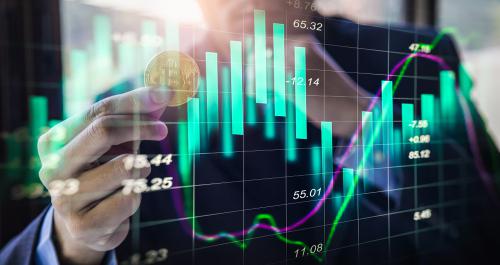Is Social Trading the Key to Reducing Volatility in Crypto?
For some financial market participants, volatility presents an excellent opportunity to generate outsized returns. However, just as a chef needs fire to cook, volatility is a similarly perilous essential. Volatility is a primary reason why the cryptocurrency markets are so popular but mastering their ups and downs—quite literally—Is a risky business. In the words of American author Philip Roth, “Fear tends to manifest itself much more quickly than greed, so volatile markets tend to be on the downside. In up markets, volatility tends to gradually incline.” We can now wonder what Roth might have said had he encountered bitcoin, for which the term “fear of missing out” could have been specially created. He might scrap his entire theory.
Looking at the chart of bitcoin’s historic rise in 2016 and 2017, which saw some investors capture returns of upwards of 4500%, it’s clear that there is no absence of volatility on the upside. This fear of missing out, or FOMO, struck in waves over the course of this period. It’s a phenomenon that was particularly evident in cryptocurrency.
As people learned of the opportunity to amass wealth by exchanging their cash for virtual coins, and that exponentially more returns came to those who “got in early”, prices rocketed higher at an astounding rate. With a subsequent crash was equally explosive, one could logically conclude that bitcoin’s unique nature is what precludes it from being subject to the same “rules” as other assets regarding price movement.
Crypto Was Born Volatile
Crypto markets are simply harder to predict and lack the components of more established financial assets. Foremost, they aren’t pegged to anything with tangible value, with prices instead reflective of demand and artificial scarcity. People can attempt to appraise the value of an idea, just as they would a corporation, but many blockchains don’t have a product or service, and instead are simply an “ecosystem” for different types of transactions and data transfers, which are themselves either faster or less expensive than modern alternatives. Is this valuable? Yes, but arriving at a consensus of exactly how valuable is difficult.
For however enormous one’s gains were had they invested in 2016, Bitcoin investors now have much more to gain from decreased volatility. Reduced volatility will be one of the key factors that attract institutional investors to climb aboard the cryptocurrency train in a bullish capacity, namely as investors and not service providers.
However, rare is the pension fund or endowment seeking out assets that tolerate daily 10% price swings. As more derivative assets are created, exchanges are launched to list coins and add liquidity, and blockchain companies grow, it will be easier to smooth the peaks and valleys in the cryptocurrency market. However, another underestimated component of any tranquil, consistent market is social trading.
Social trading has for years gradually built a loyal following of users eager to more passively manage their investment capital in more traditional markets like equities, currencies, and indices. It’s emergence in the cryptocurrency arena might help the nascent crypto asset class finally take another step toward maturity. Platforms with social trading functionality allow users to publish the positions they have established, including entry and exit points, leverage, and more.
Others can choose to copy these trades and take an identical position, thereby earning the same returns (or the same losses) as the trader they mimicked. They can also simply observe, taking note of the social notoriety and momentum behind different trades and traders, before taking their own position accordingly.
Social Trading Tames Uncertainty
By being able to visualize market sentiment and pick from strategies that thousands of others have adopted and refined, the single most powerful factor in crypto volatility—uncertainty—is effectively diminished. This is a major reason why next-generation trading platform eToro, which incorporates social trading tools, have garnered millions in funding.
The volatility of assets like bitcoin is punishing for those who make the wrong move, and the market’s more unpredictable quality makes for a double-edged sword. No wonder investors are hesitant to participate—but social trading lends a sense of confidence that can be described as akin to strength in numbers. The best trading platforms today integrate these features universally because with them it’s possible to paint a picture of the market’s driving force: people.
While social media networks like Facebook and Twitter help to spread ideas, social trading networks do the same, but with beliefs about the market and its direction. As these strategies gain momentum by being shared among crypto market participants, this collaboration fights the fear and impulsiveness that makes any incline or decline in bitcoin’s price that much steeper. Although social trading’s detractors may criticize the pervasiveness of herd mentality and its ability to sow complacency, individuals who engage in social trading can always vote with their feet, determining whether to follow certain strategies based on real-time performance.
There is a deep psychological significance in terms of how social trading impacts any market, but it may be the late Mr. Roth who sums it up best by saying, “You put too much stock in human intelligence, it doesn’t annihilate human nature.” Social trading attempts to paint human nature (as it applies to financial markets) onto a single canvas for all to see, ultimately helping pull back the curtains on its participation while stripping the cryptocurrency market of a little more mystery.

